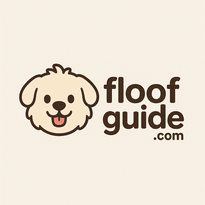Is your vacuum cleaner your best friend because of your furry companion? Does your dog leave a trail of hair wherever they go? Shedding is a natural process for dogs, but excessive shedding can be frustrating. Don't worry, you're not alone! Here's how to manage your dog's shedding and reclaim your home.
Understanding Dog Shedding
Shedding is how dogs get rid of old or damaged hair to make way for new growth. The amount a dog sheds depends on several factors:
- Breed: Some breeds, like Huskies and German Shepherds, are naturally heavy shedders due to their double coats. Other breeds, like Poodles and Bichon Frises, are considered low-shedding.
- Season: Many dogs shed more in the spring and fall as they adjust to temperature changes.
- Diet: A poor diet can lead to dry skin and increased shedding.
- Health: Underlying health conditions or allergies can also cause excessive shedding.
Grooming: Your First Line of Defense
Regular grooming is the most effective way to control shedding. Here's what you need to do:
Brush, Brush, Brush!
- Frequency: Aim to brush your dog several times a week, or even daily during peak shedding seasons.
- Type of Brush: Use the right brush for your dog's coat type. Popular choices include:
- Slicker brush: Great for removing mats and loose hair from most coat types.
- Undercoat rake: Designed to remove dead undercoat without damaging the topcoat (ideal for double-coated breeds).
- Rubber brush: Gentle and effective for short-haired breeds.
- Technique: Brush in the direction of hair growth, being gentle to avoid irritating the skin.
Bath Time (But Not Too Often!)
Bathing your dog helps to loosen dead hair and remove dirt. However, over-bathing can dry out their skin and worsen shedding.
- Frequency: Bathe your dog only when necessary, typically every 1-3 months.
- Shampoo: Use a dog-specific shampoo formulated for their coat type. Look for shampoos with moisturizing ingredients like oatmeal or aloe vera.
- Conditioner: A conditioner can help to hydrate the skin and coat, reducing dryness and shedding.
Diet and Hydration: Nourishing from Within
A balanced diet is crucial for healthy skin and coat.
- High-Quality Food: Feed your dog a high-quality dog food that contains essential fatty acids like Omega-3 and Omega-6. These help to keep their skin and coat healthy.
- Supplements: Consider adding a fish oil supplement to your dog's diet. Fish oil is a great source of Omega-3 fatty acids.
- Hydration: Ensure your dog always has access to fresh, clean water. Dehydration can lead to dry skin and increased shedding.
Other Factors to Consider
- Allergies: If your dog is excessively scratching, licking, or has skin problems, they may have allergies. Consult with your veterinarian to identify and manage any allergies.
- Parasites: Fleas and ticks can cause irritation and excessive shedding. Use preventative medications as recommended by your vet.
- Stress: Stress can contribute to hair loss. Ensure your dog has a stable and comfortable environment.
When to See a Vet
While shedding is normal, excessive or sudden hair loss can be a sign of an underlying health problem. Consult with your veterinarian if you notice:
- Bald patches
- Skin redness, irritation, or inflammation
- Excessive scratching or licking
- Changes in appetite or behavior
By following these tips, you can significantly reduce dog shedding and keep your home cleaner. Remember, consistency is key! With a little effort, you can enjoy your furry friend without being overwhelmed by dog hair.

